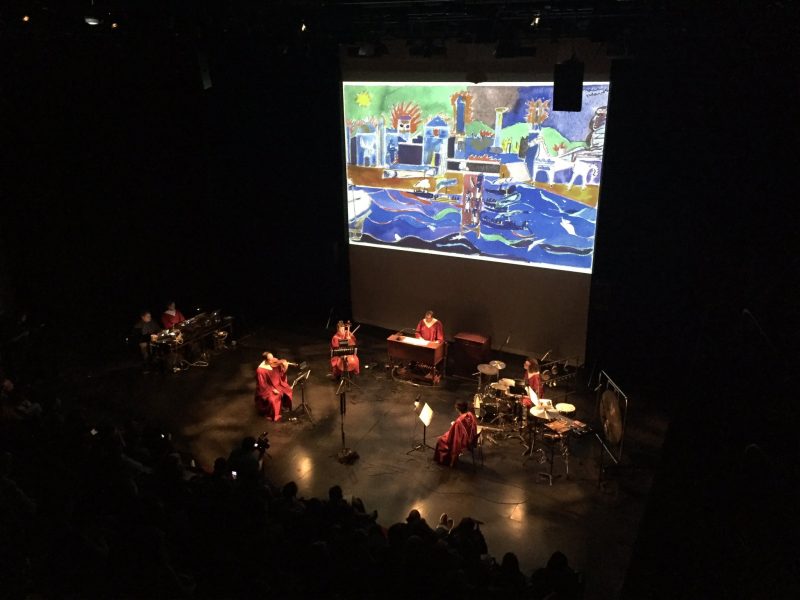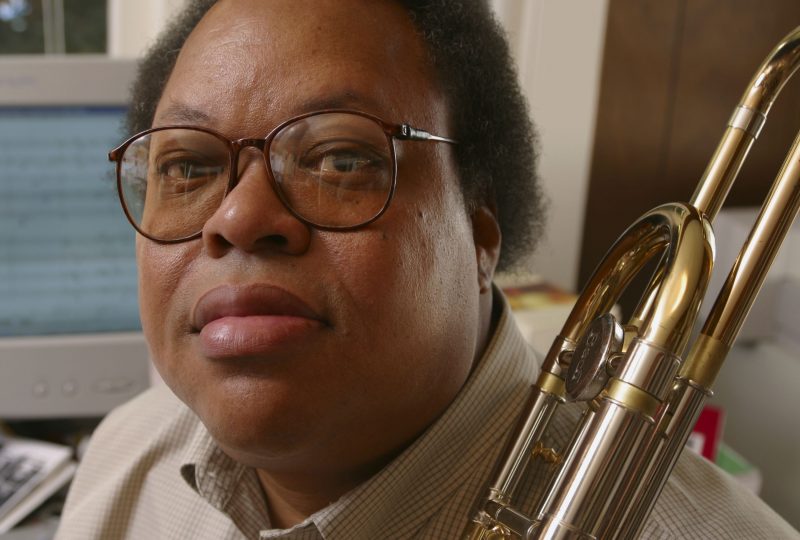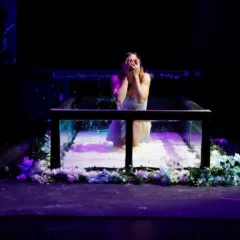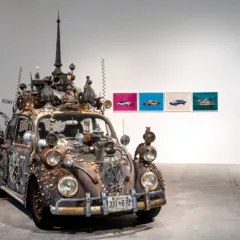
Composer and electronic music pioneer George Lewis (a MacArthur and Guggenheim Fellowship recipient) took it upon himself to continue the dialogue he shared with the late artist, performer, and multi-instrumentalist Terry Adkins in the way he knew would be most appropriate–a recital. Lewis and Adkins originally met at the American Academy in Rome in 2010. Since that time, Lewis and Adkins had talked of collaborating before Adkins’ death in 2014. Adkins’ recitals would often pay homage to significant historical figures through the marriage of his art and live performance, making for a high impact experience for all those involved. With A Recital for Terry Adkins, Lewis is paying forward this tradition in what seems to be a natural progression.
Schoenberg’s garage
The recital was performed for a packed house at FringeArts’ relaxed performance space (232-seat theater) in conjunction with the ICA’s exhibition The Freedom Principle and the Arthur Ross Gallery’s Darkwater Revival: After Terry Adkins. This performance was presented as part of the ongoing exhibition Endless Shout, which challenges how, why, and where performance and improvisation can live in a museum environment. The musicians that bring the recital to life alongside Lewis (electronics and video) were Ensemble Pamplemousse, an experimental sextet consisting of David Broome (keyboards), Natacha Diels (flute), Andrew Greenwald (percussion), Bryan Jacobs (electronics), Jessie Marino (cello), and Josh Modney (violin).

As the recital began, we heard a pair of English and Spanish speakers in unison followed by a shot of Terry Adkins on the projection. The instrumentalists, dressed in red church robes, walked down the FringeArts stairs en route to the stage as they ring hand bells and cowbells. When the instrumentalists took their seats, they played a series of tremolos underneath Diels’ trills being overdubbed on the soundboard.
Throughout the course of the hour-long recital, the music was isolated to a range of subtle and aggressive musical expressions from the ensemble. There was no set musical program like you would find in your garden-variety recital. This aspect is taken out of the equation so that the audience can simply focus on what they experience on a purely sonic level. The music was for the most part atonal, and sounded like the kind of noise-making you create in the garage–just imagine if Arnold Schoenberg composed electronic music. One of my favorite tidbits of the recital was when the string players played scratchy sixteenth notes as a call and response for the sampling to replay their phrase. The music was also full of drones, which often drowned out the string and woodwind instrumental parts.

Serious play
The work of Adkins was a thrill to experience as I was not familiar with him prior to the announcement of this recital. Projected onto a large screen was the image of a man banging two sets of four drums stacked on top of each other. The next image connected these drums with the inscription, “The Royal Knights of Danville, VA–Drum Corps.” I made another connection when a shot of Adkins and a prison cell was flipped back and forth–did he feel like a prisoner in some way, or was he referencing African Americans’ overwhelming struggle with mass incarceration as a whole? Another stimulating and moving image was a pair of Caucasian and African American mouths dripping honey (or least what looked like honey).
Lewis also explored Adkins’ unique personality in his art. Another projection juxtaposed the iconic portrait of Beethoven with an image of Adkins’ own face, which replaced Beethoven’s with the same stoic expression (I laughed!). Lewis might have intended to playfully wink a not-so-funny issue–using one serious-to-a-fault artist and segueing that to demonstrate that Adkins and the community of black artists mean business when it comes to their craft. They simply want to be heard for the beauty of who they are and what can be created. Lewis and Ars Nova Workshop worked together in making the visual component an important part of the recital, and this particular image resonated greatly with me as a classically trained African American musician.
For those of us who were not able to experience one of Adkins’ gallery installations with music, A Recital for Terry Adkins provided the next best thing. Seeing the art paired with the recital offered a more nuanced picture of who Adkins really was. In a sense, Adkins has been immortalized with a recital that relentlessly challenges the ear, appropriate given that Adkins’ art was so off the beaten path in his own right.









